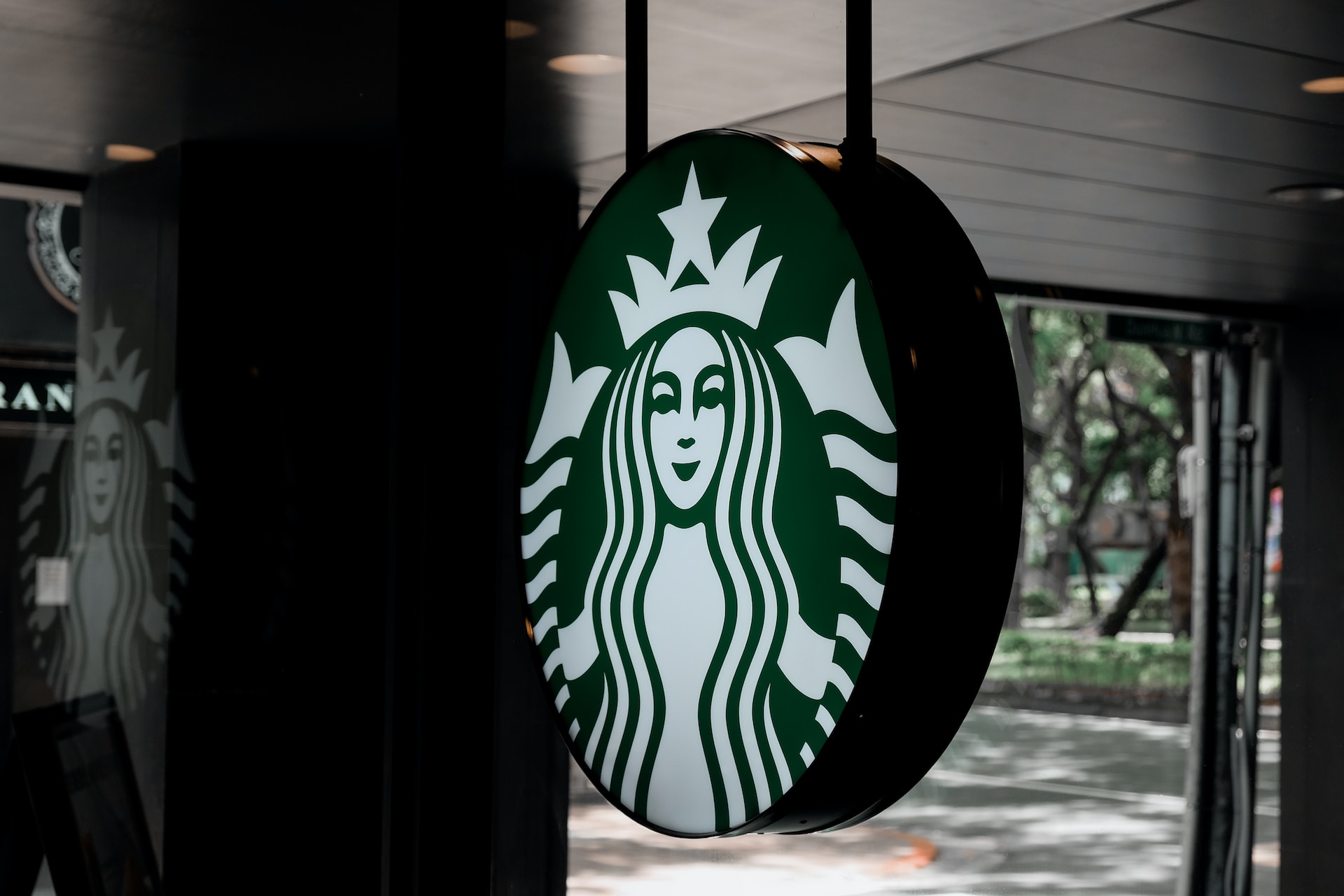Crafting Your Brand's DNA: A Comprehensive Guide to Building a Strong Identity
In the ever-evolving landscape of business, where first impressions matter more than ever, establishing a robust brand identity is not just a strategy—it’s a necessity. Your brand’s identity is its DNA, the unique code that defines its character and sets it apart from the noise. In this in-depth guide, we’ll embark on a journey to unravel the intricacies of building a strong brand identity, step by meticulous step.

Define Your Brand Values - A Blueprint for Authenticity
At the core of every captivating brand lies a meticulously crafted set of values that not only shape its identity but act as the guiding compass for every action and communication. This first step is where the soul of your brand takes form, influencing internal decisions and resonating in every interaction with the external world.
Unpacking the Essence of Brand Values
Your brand values are the bedrock upon which your entire business stands. They are the principles that transcend transactions, forming an emotional connection with your audience. Consider Apple—a beacon of innovation and simplicity. These values aren’t just part of their brand; they are the brand.

The Apple Approach
Brand Guideline
Apple’s commitment to innovation is not a mere slogan—it’s ingrained in their culture. Every product, every design choice and every customer experience reflects this commitment. Apple stands for thinking differently, pushing boundaries and simplifying complexity. The result? A brand that doesn’t just sell products but a lifestyle and a philosophy.
Hosting a Values Workshop for Your Team
Embarking on this journey requires a collaborative effort. Gather your team for an immersive values workshop. Consider it a creative brainstorming session where every team member contributes to defining the essence of your brand.
Steps to Host a Successful Values Workshop
- Inclusivity: Involve representatives from various departments to ensure diverse perspectives.
- Brainstorming: Encourage open dialogue about what the team collectively values in the company.
- Identifying Contrasts: As important as knowing what you stand for is knowing what you stand against. Identify contrasts to clarify your values.
- Visual Representation: Consider incorporating visual elements or mood boards that capture the spirit of each value.
- Consolidation: Collaboratively narrow down the list to a set of core values that resonate with everyone.
By engaging your team in this process, you not only define your brand values more authentically but also foster a sense of ownership and commitment among team members.

Going Beyond What You Stand For: Defining What You Stand Against
A crucial aspect often overlooked is defining what your brand stands against. This could be practices, attitudes or values that contradict the principles you uphold. For example, if one of your core values is sustainability, your brand might stand against environmental degradation and excessive waste.
The juxtaposition of what you stand for and against provides a clearer, more defined framework for your brand’s identity. It’s not just about creating a positive image; it’s about creating a meaningful one.
In essence, this first step is not merely about crafting a set of values—it’s about uncovering the authentic essence of your brand. It’s about discovering the principles that will guide your brand’s journey and resonate with your audience on a profound level. Once these values are defined, they become the touchstone for every decision, every campaign and every interaction, shaping a brand that stands not just for products or services but for something much more profound—a set of beliefs that forge a lasting connection with your audience.
Create a Visual Identity That Echoes Your Essence
In the symphony of brand building, your visual identity emerges as the first crescendo—an image that can either resonate harmoniously or fade into the background of consumer consciousness. This step transcends the mere creation of a logo; it’s about sculpting an identity that not only captures attention but etches itself into the collective memory. As we embark on this visual journey, let’s draw inspiration from the timeless logos of global giants like Nike and Coca-Cola, where each visual element is a chapter in a story that unfolds with each encounter.
Unpacking the Essence of Visual Identity
In the symphony of brand building, your visual identity emerges as the first crescendo—an image that can either resonate harmoniously or fade into the background of consumer consciousness. This step transcends the mere creation of a logo; it’s about sculpting an identity that not only captures attention but etches itself into the collective memory. As we embark on this visual journey, let’s draw inspiration from the timeless logos of global giants like Nike and Coca-Cola, where each visual element is a chapter in a story that unfolds with each encounter.

The Nike Swoosh Effect
Brand Guideline
Nike: Visual Design Guidelines
Nike’s visual identity is a masterclass in simplicity and impact. The iconic swoosh, designed by Carolyn Davidson, not only captures the essence of movement but has become synonymous with the brand’s ethos of pushing boundaries. The consistency in its application, whether on a pair of sneakers or a billboard, reinforces the brand’s identity at every touchpoint.
Navigating the Visual Odyssey with Design Experts
Creating a visual identity that leaves an indelible mark requires more than just artistic flair; it demands strategic thinking and alignment with your brand’s personality and values. Here’s a roadmap for success:
- Collaborate with Professional Designers: Engage with design professionals who specialise in translating brand identity into visual elements. Their expertise ensures that your brand’s visual language aligns seamlessly with its ethos.
- Consistency Across Colours, Fonts and Logos: Consistency is the linchpin of a successful visual identity. Ensure that your chosen colours, fonts and logos are consistently applied across all platforms, creating a cohesive and recognisable brand image.
- Storytelling through Visual Elements: Your visual identity should narrate a story. Whether it’s the vibrancy of colours, the elegance of fonts or the symbolism in logos, each element should contribute to a narrative that sparks recognition and resonates with your audience.
- Strive for Recognition: A successful visual identity isn’t just aesthetically pleasing; it’s memorable. Strive for a design that, at a glance, sparks instant recognition and association with your brand’s values.

Building Recognition: The Coca-Cola Paragon
Visual Identity
Consider Coca-Cola’s script logo—the dynamic red hue, the flowing script and the iconic contour bottle. These visual elements, consistently applied, have become synonymous with joy, celebration and the simple pleasure of sharing moments. Coca-Cola’s visual identity doesn’t just sell a beverage; it encapsulates an experience.
Crafting a visual identity that resonates requires a marriage of creativity and strategic intent. By collaborating with professionals, maintaining consistency, infusing storytelling into design elements and striving for instant recognition, your brand’s visual identity can become a powerful emblem that not only captures attention but etches itself into the hearts and minds of your audience. Remember, it’s not just about what your brand looks like; it’s about what it says and the emotions it evokes with every visual encounter.
Harmonising Your Brand Symphony: Consistent Messaging Across the Multiverse
In the vast expanse of the digital cosmos, where brands resonate as constellations in the minds of consumers, the significance of a consistent brand voice cannot be overstated. This step delves into the orchestration of a harmonious melody—a brand’s voice that reverberates consistently across all platforms. Drawing inspiration from industry stalwarts like Starbucks and Disney, we’ll explore the art of crafting a narrative that remains true to your brand ethos.
Unveiling the Essence of Consistent Messaging
Your brand’s voice is not merely the words it speaks; it’s the resonance of its personality, the echo of its promises and the thread that weaves together a cohesive narrative. Imagine Starbucks—a brand that doesn’t just sell coffee; it sells an experience. From the aroma in their cafes to the messages on their cups, every touchpoint sings the same tune of warmth and familiarity.

The Starbucks Symphony
Starbucks: Visual Design Guidelines
Your brand’s voice is not merely the words it speaks; it’s the resonance of its personality, the echo of its promises and the thread that weaves together a cohesive narrative. Imagine Starbucks—a brand that doesn’t just sell coffee; it sells an experience. From the aroma in their cafes to the messages on their cups, every touchpoint sings the same tune of warmth and familiarity.
Crafting a Unified Voice through Brand Guidelines
Creating a seamless brand experience requires more than just good intentions; it demands a strategic approach. Here’s a roadmap to guide you:
- Develop Comprehensive Brand Guidelines: Craft a detailed document that encompasses your preferred tone, style and key messaging points. This is the compass that ensures every communication emanates from the same narrative core.
- Train Your Team for Consistency: Your team is the custodian of your brand voice. Regular training sessions ensure that every team member, from social media managers to customer support representatives, is well-versed in the nuances of your brand’s communication style.
- Tone and Style Consistency: Whether it’s a tweet, a blog post or a customer email, maintain a consistent tone and style. If your brand is known for a conversational and friendly tone, ensure that it permeates every communication.
- Key Messaging Points: Identify key messages that encapsulate your brand’s promises and values. These should echo consistently across platforms, reinforcing the core narrative you want to convey.

Building Universality: The Disney Enigma
Consider Disney—a brand that transcends generations and genres. From animated classics to theme parks, the messaging is consistently centered around joy, magic and the creation of timeless memories. The language used in a Disney movie trailer mirrors the warmth of a theme park brochure, creating a universal brand language.
In essence, the goal is not merely to speak but to sing—to orchestrate a symphony of words that creates a cohesive brand experience. By developing robust brand guidelines, consistently training your team and ensuring every message aligns with your brand’s personality, your brand’s voice can become a melody that resonates across platforms and captivates your audience. Remember, it’s not just about what you say; it’s about how consistently and harmoniously you say it.
Illuminating the Path: Knowing Your Audience Inside Out
In the kaleidoscope of brand building, understanding your audience is the prism through which every element gains clarity and purpose. This step is a deep dive into the psyche of those you seek to captivate—a journey that transcends demographics to grasp the intricacies of desires, preferences and pain points. Drawing inspiration from trailblazers like Airbnb, whose brand is a vibrant tapestry woven from the diverse threads of its global user base, we’ll explore the art of crafting a brand identity that not only mirrors your values but resonates profoundly with your audience.
Unveiling the Essence of Audience Understanding
Your audience is not a monolith but a diverse mosaic of individuals with unique aspirations and challenges. Airbnb, for instance, has elevated audience understanding to an art form. The brand’s identity doesn’t merely acknowledge diversity; it celebrates it. From the visuals on their platform to the stories they share, every element is a reflection of the varied experiences of their global community.

Airbnb's Ode to Diversity
Airbnb’s brand identity is a testament to the power of understanding your audience. Their visuals showcase not just homes but the lives lived in them. The messaging is crafted to embrace the multitude of reasons people travel—to connect, to explore, to belong. By understanding the diverse motivations of their users, Airbnb has built a brand that feels personal, inclusive and enriching.
The Art of Market Research
Embarking on a journey of profound audience understanding requires strategic exploration. Here’s how you can navigate this intricate terrain:
- Dive into Comprehensive Market Research: Go beyond demographics; delve into the lifestyles, preferences and pain points of your audience. Use surveys, interviews and data analytics to build a holistic picture.
- Craft Personas that Breathe Life: Create detailed audience personas that embody the characteristics, aspirations and challenges of your target demographic. This humanises your audience, making it easier to tailor your brand to their needs.
- Tailor Your Brand Messaging: Armed with insights, refine your brand messaging to resonate with the emotions and aspirations of your audience. If your audience values sustainability, infuse this into your brand narrative.
- Visuals as a Reflection of Diversity: Ensure that your visuals mirror the diversity of your audience. Whether it’s the images on your website or the faces in your marketing materials, authenticity in representation fosters a connection.

Building Bridges: The Spotify Connection
Consider Spotify, a brand that understands the varied tastes and preferences of its users. Through personalised playlists, tailored recommendations and diverse artist features, Spotify connects on an individual level. By aligning its offerings with the unique preferences of each user, Spotify transcends being a mere streaming service; it becomes a companion in the auditory journey of its diverse audience.
In essence, understanding your audience is not a static endeavour; it’s a continuous exploration. By immersing yourself in the intricacies of their lives, preferences and challenges, you not only craft a brand that reflects their values but also establishes a meaningful connection. Remember, your audience is not just the consumer of your brand; they are the co-authors of its story.
Weaving Narratives: Building Brand Recognition Through the Art of Storytelling
In the symphony of brand building, storytelling emerges as the melodic thread that not only connects with hearts but etches a lasting imprint in the minds of your audience. This step is an invitation to narrate—not just the features of your products or services but the journey, the triumphs and the hurdles overcome. Drawing inspiration from trailblazers like TOMS, whose brand identity is a testament to the art of giving back, we’ll explore the alchemy of building brand recognition through the power of storytelling.
Unfolding the Power of Brand Storytelling
Stories are not just narratives; they are portals that transport your audience into the heart and soul of your brand. TOMS, for instance, isn’t merely a shoe company; it’s a storyteller with a narrative intricately woven around a commitment to giving back. The brand’s journey, successes and challenges are threads in a tapestry that resonates with consumers on a deeper, more emotional level.

TOMS and the Story of Giving Back
TOMS has transcended being a footwear brand; it has become a movement fuelled by a compelling narrative. The brand’s story is rooted in the One for One concept—every purchase results in a pair of shoes being donated to a child in need. This narrative of social responsibility has not only defined TOMS but has become the heartbeat of its brand recognition.
Crafting an Authentic Brand Narrative
Developing a brand story that resonates requires more than mere words; it demands authenticity, emotion and a commitment to transparency. Here’s how you can infuse storytelling into your brand:
- Humanise Your Business: Share behind-the-scenes moments, glimpses into your team’s dynamics and the journey of bringing your products or services to life. Humanising your business creates a relatable narrative.
- Customer Success Stories: Your customers are the heroes of your story. Share their success stories, testimonials and experiences with your brand. This not only adds credibility but also builds a community around your brand.
- Commitment to Social Responsibility: If your brand embraces social responsibility, make it a focal point of your narrative. Whether it’s sustainability practices, community initiatives or charitable contributions, share your commitment authentically.
- Consistency in Storytelling: Ensure that your brand story is consistently woven into all your communications, from social media posts to marketing materials. Consistency creates a narrative that is recognisable and memorable.

Crafting Authenticity: The Patagonia Expedition
Consider Patagonia, a brand that has woven environmental activism into its brand story. From detailing the environmental impact of their products to spearheading campaigns for wilderness preservation, Patagonia’s narrative is one of commitment and advocacy. By authentically aligning their story with their values, Patagonia has created a tribe of environmentally conscious consumers.
In essence, storytelling is not a marketing tactic; it’s the soul of your brand. By sharing your journey, celebrating successes, acknowledging challenges and embracing social responsibility, you create a narrative that transcends transactions and forges connections. Your brand becomes more than a choice; it becomes a story that your audience wants to be a part of.
The Art of Perpetual Evolution: Adapting While Staying True to Core Values
In the dynamic theatre of commerce, where change is the only constant, the ability to adapt is the compass that guides a brand through evolving landscapes. This step is an exploration of the delicate dance between transformation and authenticity—a journey inspired by stalwarts like IBM, whose brand evolution is a testament to seamlessly adapting while steadfastly anchoring itself in enduring principles of innovation and progress.
Understanding the Art of Adaptation
Adaptation is not a mere reaction to change; it’s a proactive dance with evolution. IBM, a global technology giant, has mastered this art by consistently reshaping its brand identity over decades. The core values of innovation and progress act as the North Star, providing a steady course through the ever-shifting currents of market dynamics.

IBM's Timeless Evolution
IBM’s brand evolution is a symphony of adaptation and consistency. From its inception as a tabulating machine company to its current status as a leader in cloud computing and artificial intelligence, IBM has seamlessly pivoted with the times. Yet, the constants have been innovation, progress and a commitment to solving complex problems through technology.
Harmonising Adaptation with Core Values
While the landscape may change, your brand’s essence should remain unwavering. Here’s a roadmap to guide your brand through adaptation:
- Regularly Reassess Market Trends: Stay attuned to market trends, technological advancements and shifts in consumer behaviour. Regular assessments ensure that your brand strategy aligns with the current zeitgeist.
- Listen to Customer Feedback: Your customers are the compass that can guide your brand through uncharted territories. Actively listen to their feedback, expectations and preferences to inform strategic decisions.
- Align with Business Objectives: Adaptation should be purposeful. Align changes in your brand strategy with your business objectives. Whether it’s expanding into new markets or embracing sustainable practices, ensure synergy with your overarching goals.
- Embrace Flexibility in Brand Strategy: Cultivate a flexible mindset in your brand strategy. This doesn’t mean compromising core values but being open to innovative approaches that align with those values.
The IBM Legacy: A Beacon of Adaptation
Consider IBM’s evolution from punch-card tabulators to cutting-edge technologies like quantum computing. The consistent thread has been a commitment to pushing the boundaries of innovation. IBM’s brand remains synonymous with progress, adapting to emerging technologies while staying true to its pioneering spirit.
In essence, the art of adaptation is not a departure from your brand’s essence but a refined expression of it. By regularly reassessing, listening to your audience, aligning with objectives and embracing flexibility, your brand can navigate the winds of change without losing its true north. Remember, adaptation is not a compromise—it’s a strategy for sustained relevance and enduring resonance.







